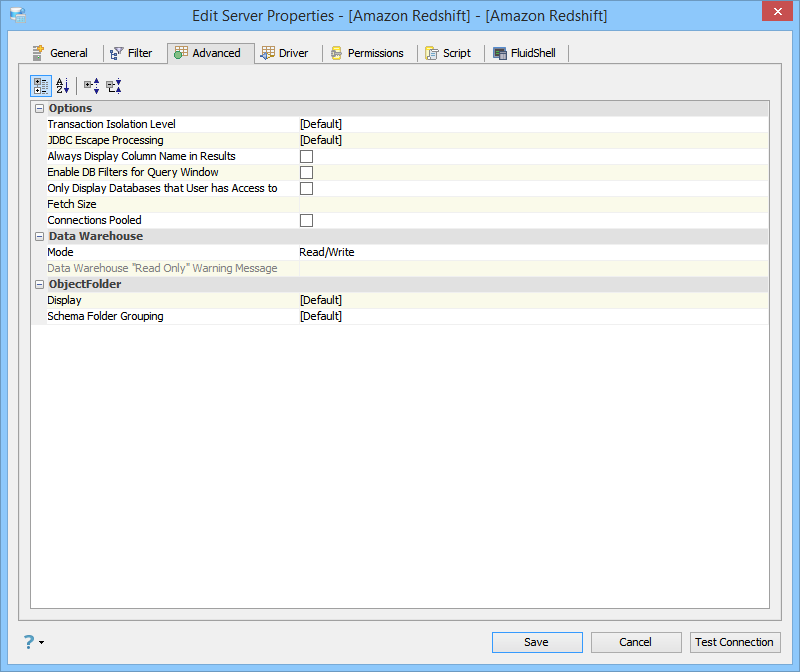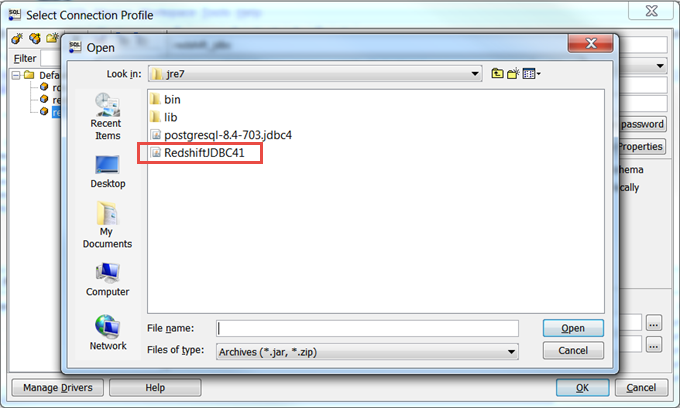Mac Os Install Jdbc Redshift Driver
The Simba ODBC driver for Redshift complies with the latest ODBC 3.80 data standard and adds important functionality such as Unicode and 32- and 64-bit support for high-performance, cloud computing environments. The Simba JDBC driver for Redshift includes support for JDBC 4.0 and 4.1. Product Highlights. Setting up database connections. On MacOS and Linux, there are two separate text files that need to be edited. UnixODBC includes a command-line executable called odbcinst, which can be used to query and modify the DSN files.However, these are plain text files you can also edit by hand if desired.
- Mac Os Install Jdbc Redshift Driver Download
- Download Jdbc Driver For Redshift
- Mac Os Install Jdbc Redshift Driver Windows 7
MySQL JDBC for macOS
This tutorial shows how to set up a data source and connect to a MySQL® database using the Database Explorer app or the command line. This tutorial uses the MySQL Connector/J 5.1.46 driver to connect to a MySQL Version 5.5.16 database.

Step 1. Verify the driver installation.
If the JDBC driver for MySQL is not installed on your computer, find the link on the Driver Installation page to install the driver. Follow the instructions to download and install this driver on your computer.
Step 2. Set up the data source.
You set up a data source using the Database Explorer app or the command line.
Mac Os Install Jdbc Redshift Driver Download
Set Up Data Source Using Database Explorer
Open the Database Explorer app by clicking the Apps tab on the MATLAB® Toolstrip. Then, on the right of the Apps section, click the Show more arrow to open the apps gallery. Under Database Connectivity and Reporting, click Database Explorer. Alternatively, enter
databaseExplorerat the command line.In the Data Source section, select Configure Data Source > Configure JDBC data source.
The JDBC Data Source Configuration dialog box opens.
In the Name box, enter a name for your data source. (This example uses a data source named
MySQL.) You use this name to establish a connection to your database.From the Vendor list, select
MySQL.In the Driver Location box, enter the full path to the JDBC driver file.
In the Database box, enter the name of your database. In the Server box, enter the name of your database server. Consult your database administrator for the name of your database server. In the Port Number box, enter the port number.
Under Connection Options, in the Name column, enter the name of an additional driver-specific option. Then, in the Value column, enter the value of the driver-specific option. Click to specify additional driver-specific options.
Click . The Test Connection dialog box opens. Enter the user name and password for your database, or leave these boxes blank if your database does not require them. Click .
If your connection succeeds, the Database Explorer dialog box displays a message indicating the connection is successful. Otherwise, it displays an error message.
Click . The JDBC Data Source Configuration dialog box displays a message indicating the data source is saved successfully. Close this dialog box.
Set Up Data Source Using Command Line
Create a JDBC data source for a MySQL database.
Set the JDBC connection options. For example, this code assumes that you are connecting to a JDBC data source named
MySQL, database serverdbtb01, port number3306, and full path of the JDBC driver file/home/user/DB_Drivers/mysql-connector-java-5.1.17-bin.jar.To add JDBC driver-specific connection options, use the
addConnectionOptionsfunction.Test the database connection by specifying the user name
usernameand passwordpwd, or leave these arguments blank if your database does not require them.Save the JDBC data source.
After you complete the data source setup, connect to the MySQL database using the Database Explorer app or the JDBC driver and command line.
Step 3. Connect using the Database Explorer app or the command line.
Connect to MySQL Using Database Explorer App
On the Database Explorer tab, in the Connections section, click and select the data source for the connection.
In the connection dialog box, enter a user name and password, or leave these boxes blank if your database does not require them. Click .
The Catalog and Schema dialog box opens.
In the Catalog list, select the catalog. Click .
The app connects to the database and displays its tables in the Data Browser pane. A data source tab appears to the right of the pane. The title of the data source tab is the data source name that you defined during the setup. The data source tab contains empty SQL Query and Data Preview panes.
Select tables in the Data Browser pane to query the database.
Close the data source tab to close the SQL query. In the Connections section, close the database connection by clicking .
Note
If multiple connections are open, close the database connection of your choice by selecting the corresponding data source from the list.
Connect to MySQL Using JDBC Driver and Command Line
Connect to a MySQL database using the configured JDBC data source, user name
username, and passwordpwd.Close the database connection.
See Also
Apps
Functions
Download Jdbc Driver For Redshift

close|configureJDBCDataSource|database|saveAsJDBCDataSource|setConnectionOptions|testConnection